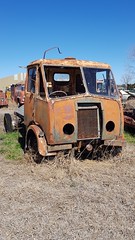
- Hire Forklifts Sydney
18 Wheeler Accident Litigation: Understanding and Interpreting the Driver\’s Log Book
by
Paul H. Cannon
Truck accident litigation, when done right, is an entirely different process than auto accident litigation. Federal and State Regulations require drivers to keep detailed information about the vehicle and the trip, including the amount of time they are driving vs the amount of time they are of duty and/or resting. A driver who has been on the road too long may be suffering from fatigue and/or unintended consequences of anti-sleep aids that they may be consuming to stay awake.
Many, but not all, rigs contain a GPS system and/or some form of black box such as a Qualcomm or other tracking system. These systems may contain detailed information about the trucks average speed during a trip, time spend with the engine idling, time spent with the hood open and when the engine was on vs off. This data can shed light on how a wreck occurred. However, even when this type of information is available, it does not always give a complete picture of what was going on. Thus, it can be very beneficial to compare it to the required documentation to piece the whole picture together.
One form of required documentation that can be very useful in piecing together the truth about a semi truck accident is the driver s log book. Drivers are required to create and maintain driver s log books. Under Federal law, commercial motor vehicle log books must account for every minute a truck driver spends on and off the clock during an over-the-road haul. However, the log books are not always accurate. They have been dubbed such names as lie books and cheat sheets in the trucking industry for a reason. To determine their accuracy, a
truck accident lawyer
must be able to decipher the log books.
How do you know you have the actual log book? Drivers can cheat the system by running two or more sets of log books, enabling them to omit things they do not want seen. Make sure you get the complete personnel and payroll records so that you can compare the two and make sure there are daily logs for every job worked. Also, ask the driver and the safety manager about the log book policies and what ones they are aware of.
Once you have all of the log books, the next step is to verify the accuracy of what it says. First, map the miles to drive the trip from point-to-point and compare it to the miles and times logged. Drivers can falsify long books by reporting the wrong number of miles, using post office to post office miles instead of the exact address, recording the wrong number of hours or running continuously and/or at excessive speeds to meet deadlines and then adding hours back while off-duty. When you compare this information to the time the engine was on and off an the time actually running vs real miles, you may find that the math simply does not add up. This will not be apparent at a quick glance of the book.
Second, compare the bills of lading and any other records you may have documenting loads delivered to the trips reported in the driver s log. Truck drivers can gain extra driving time by dropping a load/trip from the book. For example: a driver travels from A to B then B to C. He may tear up the firs log sheet showing A-B once he arrives at B.
Third, compare the truck maintenance records to the log. These records may reflect when the truck was in and out of service. They may also tell you whether he reported any issues with the truck and/or whether it was properly maintained.
Other documents that can be helpful to a
truck accident attorney
in evaluating the driver s log include anything that tells you where the driver was at any given time. Receipts, even seemingly insignificant ones usually show a time and date. Dispatch records, weighing tickets, speeding tickets and inspection reports are all documents that can be used to match up the true time and speed required to achieve it during a haul. It may be the difference of knowing the true speed of the truck and how big of a hurry the driver was in and never knowing the truth.
Paul H. Cannon is an attorney practicing in Houston, Texas with the law firm of
Simmons and Fletcher
. He is Certified in Personal Injury Trial Law by the Texas Board of Legal Specialization. He also writes for the following blogs:
Houston Texas Personal Injury Law Blog
and
Just Another Injury Lawyer in Houston Texas
.
Article Source:
ArticleRich.com